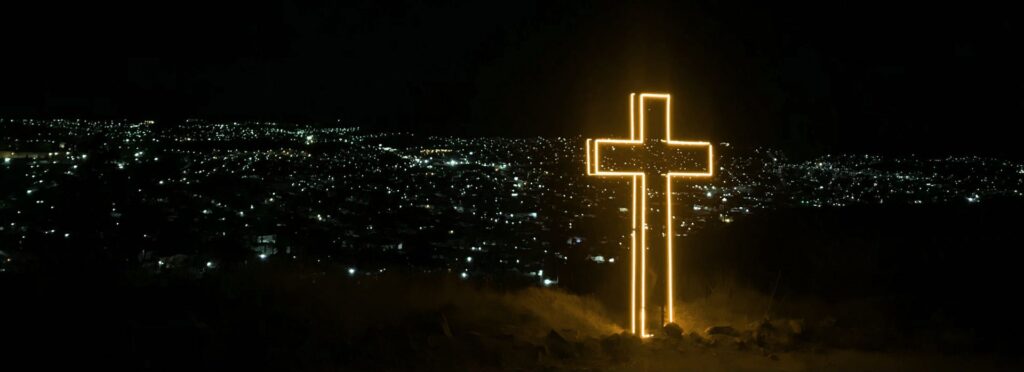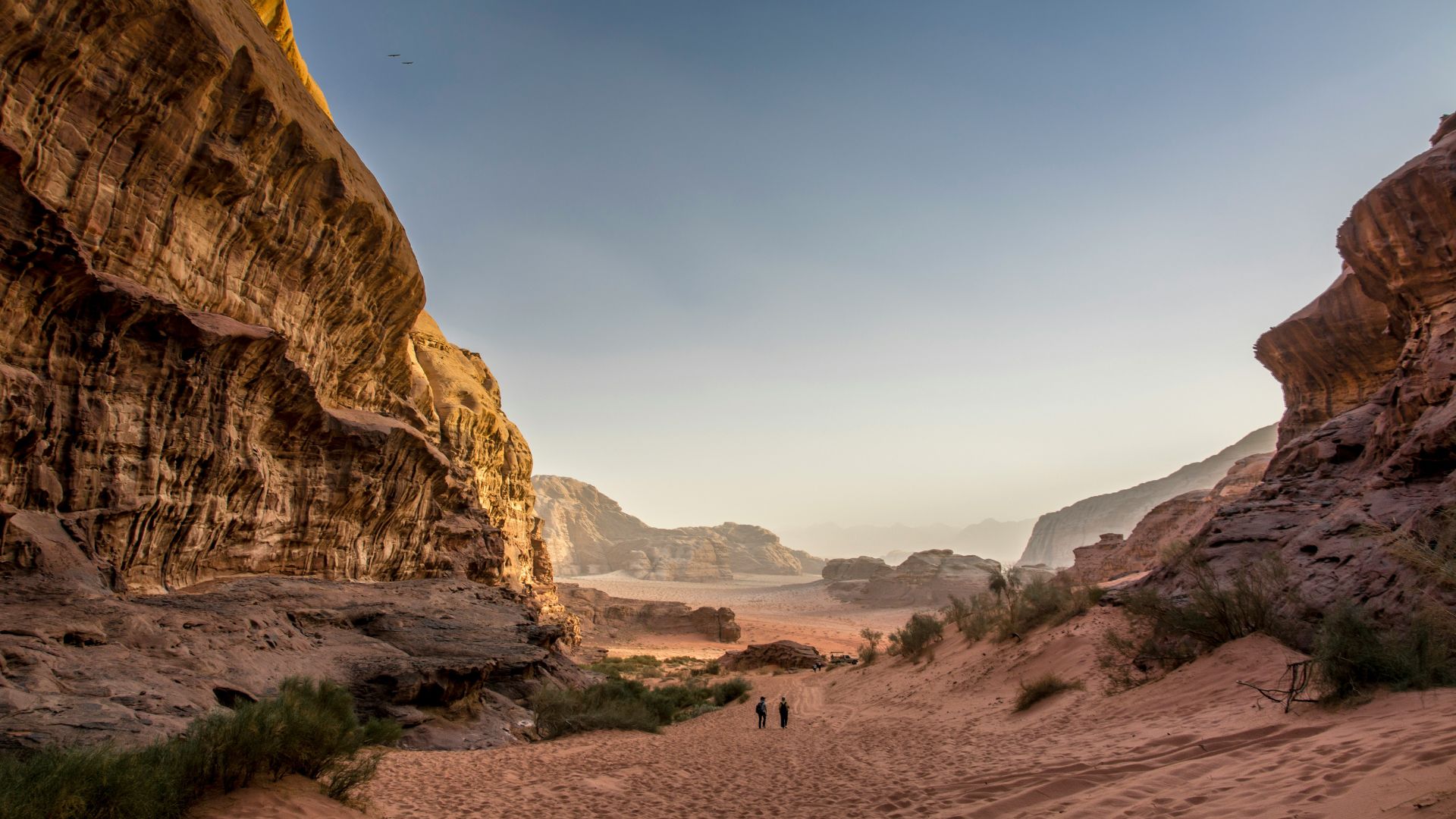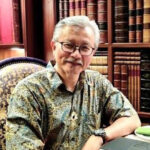The New Thing in History: A river in the desert
It was Karl Jasper who noted that in the 5th century BC, thinkers like Socrates and Plato in Greece, Shakyamuni in India, and Confucius and Laozi in China along with the Hebrew prophets arose in a period of philosophical reflections which seemed to agree that the unexamined life is not worth living. This Axial Age was the coming of age of human civilization as the agrarian revolution helped to build cities and empires.
Christianity, which arrived later with the incarnation of Christ turned a former desert faith of the wandering Jews into a vibrant religion. It became the dominant religion of the Holy Roman Empire for a thousand years. Christ was the ‘new thing’ prophesied in Isaiah 43:19 that opens up ‘a way in the wilderness and rivers in the desert’ of faith.
However Christendom, which became centred in Rome, took pride in the palatial religious institutions and powerful clerical structures which mediated the eternal destinies of illiterate masses. Effectively, they had drained life out of the believers and returned them to the exilic desert.
Then came Martin Luther and the Reformers who sought to release believers from the captivity of institutionalism and legalism imposed by the church to drink freely from the ‘River of life’ by faith alone. Since the 15th century, Europe has indeed provided the world with another wave of philosophical reflection, from the Enlightenment to the Protestant Reformation, which has helped shape the modern world.

Can Christianity Be a Mainstream Religion in Asia?
Christianity which was being exported to the rest of the world became ascendent as the dominant religion in the world. The 19th century Christian missionary advance was described as the ‘Great Century’, [1] filled with optimism that evangelization of the world in this generation was an imminent possibility.[2] Visions of penetration fuelled by colonial gunboats and commercial steamships led to missionary collaboration and comity dreams of Christian occupation of foreign lands in Asia, Africa, and Latin America.
But the writing was already on the wall. The indigenous leaders of these erstwhile mission fields were quick to see that Christianity was fast declining in the West and perceived that Western missionaries were plying their trade in new markets even as their domestic markets were drying up. Money was key in winning adherents and converts were despised in their own lands as ‘rice Christians’ or ‘little Westerners’. Many were convinced that Christianity would never become a mainstream religious faith in their societies, simply because it was a foreign religion and indeed a Western faith. The historical baggage of Western Christian mission did not help especially in cultures with strong historical consciousness.

Global Christianity Re-examined
As we sit in the rapidly urbanizing world of the 21st century, and contemplate the Fourth Lausanne Congress, are we filled with a false sense of optimism that the evangelization of the world is imminent in our generation? Or are we cognizant that Christianity has once again been reduced to a desert faith despite large crowds in the urban megachurches? Perhaps the children of Christian parents are more perceptive if they see similarities between the church of today and the Second Temple of Jesus’ time. The prophetic warning then was that the end was near for that majestic temple.
The church in the Majority World cannot become mainstream faith in these lands unless it is freed from Western cultural forms and becomes indigenized. Beyond translating the language used in church into local languages with cultures and structures unchanged, the indigenous churches must also develop localized Christian forms. The globalization of the world and the rise of polycentric global Christianity with diaspora communities are opportunities for new faith expressions to develop.[3] We can begin by asking the questions of what it means to be human and actively engage in local cultural and philosophical discourses.
In the aftermath of the COVID-19 pandemic, we have been asking questions about human nature and destiny, rather similar to the philosophical anthropological reflections of the Axial Age. What is the ‘new thing’ which can spring forth once again in our wilderness wandering to help inform our journey forward?
I suggest we return to the person of Christ himself who was the ‘new thing’ which sprang forth in history. In Christ, we can appreciate how we are to become his eschatological community, his missional community, and his incarnational community. As we develop the courage to see the vision of what he wants his church to be, perhaps we can truly become the ‘new being’ in Christ on the way to the ‘Celestial City’.

The Eschatological Community of Hope
Christ came in the fullness of time and became incarnate as the God-man in history. His advent demonstrated that history is the arena where God still acts. His kenosis that led God to empty himself to live as a humble servant, ultimately laying down his life as a sacrifice on the humiliating cross, reveals a new prototype for human living. The Apostle Paul calls this new humanity in Christ a new creation.
N.T. Wright calls the church the pilot project for the new creation.[4] As disciples of Christ who are the new creation, we have become also the eschatological community, birthed by the Holy Spirit and imbued with the hope of new life of futurity. The church is historical and yet eschatological. It has Christological foundations, but it is also eschatologically directed, as the theologian of hope Jurgen Moltmann puts it.[5] The hope of the coming kingdom of God can provide the world with a hopeful vision of transformation in history mediated by the church.
The Missional Community of Faith
The early church knew itself to be the ekklesia (‘called out’ assembly) community of faith, who would be sent out into the world as messengers of the gospel of Christ. As the persecuted church, it called for disciples to have the faith to worship and courage to be witnesses.
The early church grew and proliferated mainly because the disciples knew themselves to be the eschatological community as well as the missional community. They understood their call to be an apostolic church, the sent ones (apostolos). It was not a role limited to the apostles per se but to all members of the church. Understanding their missional role helped the early church to multiply. They preached the gospel when they were scattered by persecution wherever they were relocated. By faith they saw the city not built by human hands, whose architect and builder is God.
‘For the church to thrive in the 21st century, we need to recover the laity-driven ministry and to equip the whole church to participate in God’s mission (missio Dei) . . . and the whole church must be empowered as the holy nation to participate in mission as the universal priesthood of believers.’
The Antioch church was planted by missional Christians who were all laity. The church leaders were also clearly multi-ethnic and multi-cultural. Their laity-driven church-planting initiative prompted the leaders in the mother church in Jerusalem to send forth Barnabas, and later to convene the Jerusalem council where the leaders met Paul to agree on the distinctives of Gentile Christianity.
For the church to thrive in the 21st century, we need to recover the laity-driven ministry and to equip the whole church to participate in God’s mission (missio Dei) if there is any hope of the church fulfilling the Great Commission.[6] To do this, the current two-tier system of clergy-laity sacred-secular divide must be dismantled. The exalting of full time workers whether the clergy or career missionaries as God’s holy nation must be debunked, and the whole church must be empowered as the holy nation to participate in mission as the universal priesthood of believers, as Luther envisaged. The unfinished task of the Reformation—liberating Christians to truly live in Christ—must be completed in our generation if there is to be hope of the church fulfilling the mission of Christ.
The Incarnational Community of Love
The disciples of Christ are called to become a new humanity characterized by love, in imitation of Christ. Christ has come to call us to live by a new commandment: to love one another as he has loved us. This is over and beyond the great commandments to love God and love our neighbour as ourselves. Love is the hallmark of the church and indeed of the eschatological community. This vision of the church as an eschatological community can help redefine the present form of the church, full of new possibilities in faith expressions, freeing it from the Western structural forms.
The most crucial part of the church in the 21st century is the participation of Christians in the life of the community, beyond the four walls of the church.
The most crucial part of the church in the 21st century is the participation of Christians in the life of the community, beyond the four walls of the church. Again, the experience of primitive Christianity growing as a persecuted church without religious buildings can inspire us. The recent pandemic has made church buildings redundant for the years they cannot be accessed and used. House church movements in China to new church planting movements in Europe have proliferated without investment in capital campaigns for erecting church buildings. Creative use of space, especially in the cities on a Sunday can encourage imaginative and innovative ways of being a church.
If the church is to be missional as faithful worshippers and witnesses of the gospel, then we must be incarnational. Like Christ, God in human flesh who lived among us, we are to humble ourselves and serve our community in practical daily living. By divesting ourselves of expensive religious structures and cultural practices, perhaps we can invest more in doing good and civic benefaction to contribute directly to social needs and cultural developments in our community as Bruce Winter exhorted.[7]
For Christians, being incarnational means engaging in civil society and promoting social cohesion as peacemakers while revealing the hope of the kingdom in Christ. As an example, many Christian youths volunteer as facilitators with Asian Journeys, a social enterprise founded in multi-ethnic and multi-religious Singapore, which runs programs for equipping young people to live in community and mediate ethnic and faith differences and conflicts.
Conclusion
History is the arena where God acts and ‘the new creational eschatology has come to birth within history.’[8] His church, as the called-out ones, needs to be sent out missionally to live out the gospel of Christ at street level, not merely to proclaim the gospel but to engage and serve the community as witnesses to the gospel. This can be done when we engage vocationally in the city as the urban challenges are great in the 21st century but the opportunities are also immense.[9]
Endnotes
- Kenneth Scott Latourette, History of the Expansion of Christianity v. 6: The Great Century in Northern Africa and Asia, 1800-1914 (England: Paternoster Press, New edition, 1971).
- John R Mott, The Evangelization of the World in this Generation (North America: Sagwan Press, 2018).
- See Scott W. Sunquist, The Unexpected Christian Century: The Reversal and Transformation of Global Christianity, 1900-2000 (Michigan: Baker Academic, 2015).
- N.T. Wright, History and Eschatology: Jesus and the Promise of Natural Theology (Texas: Baylor University Press, 2019), 260.
- Jurgen Moltmann, The Church in the Power of the Holy Spirit: A Contribution to Messianic Ecclesiology (Minnesota: Augsburg Fortress, 1993), 13.
- Editor’s note: See article entitled ‘A Radical Vision of the Whole Church,’ by Wonsuk Ma, Lausanne Global Analysis, May 2023.
- See Bruce Winter, Seek the Welfare of the City: Christians as Benefactors and Citizens (Michigan: Wm. B. Eerdmans, 1996), especially as he discusses civic obligations to help widows and needy in the society and participation in the politeia.
- Wright, History and Eschatology, 227
- Editor’s note: See article entitled ‘A Holistic Vision of Mission in Changing Times,’ by Sam Cho, Lausanne Global Analysis, July 2023.

